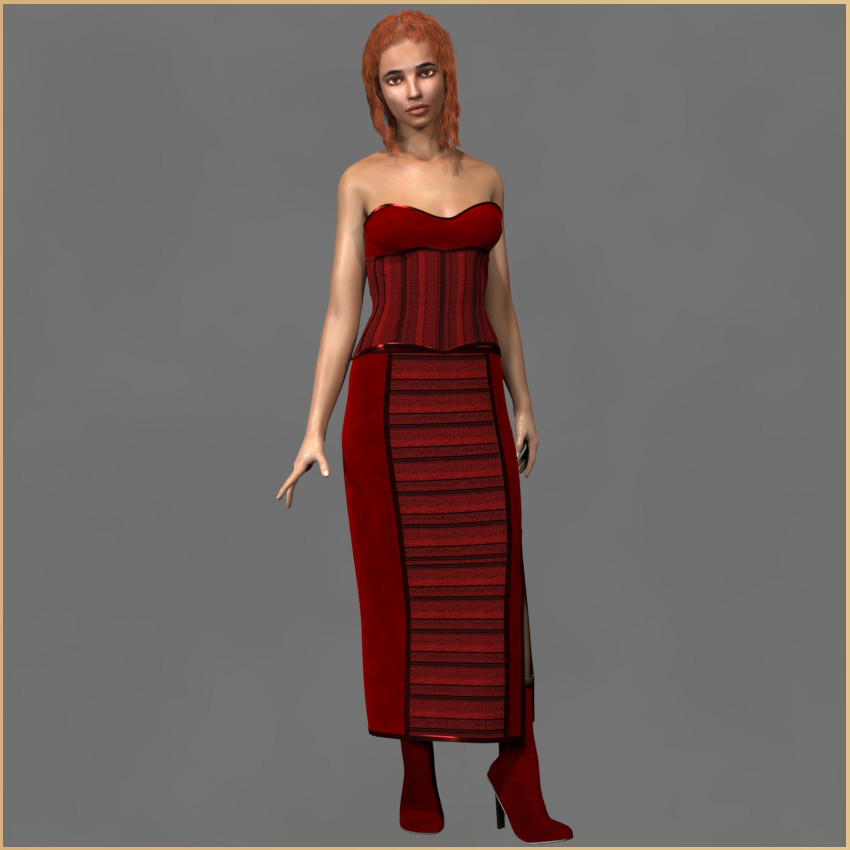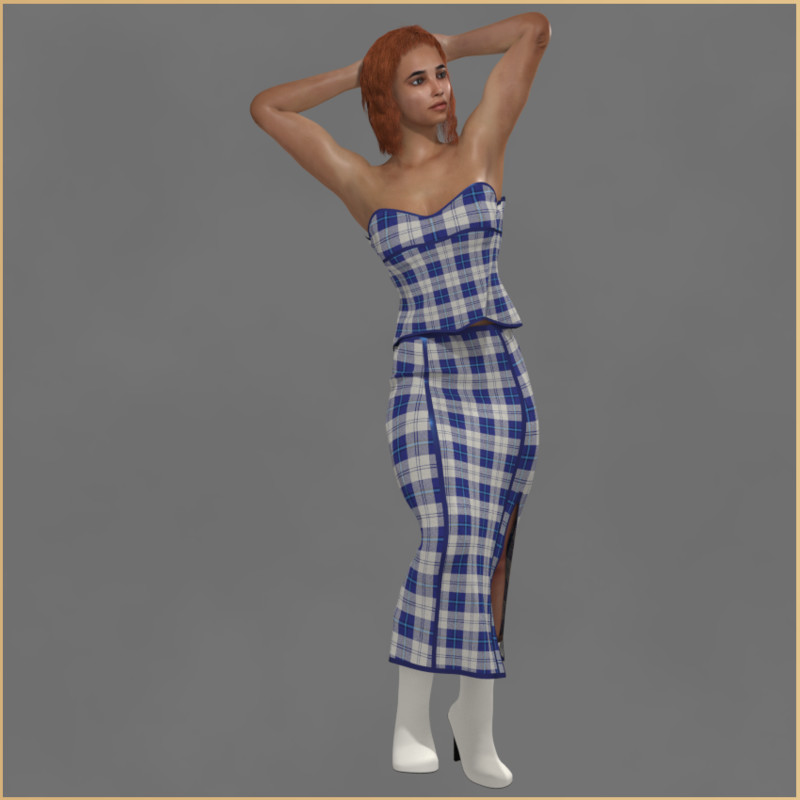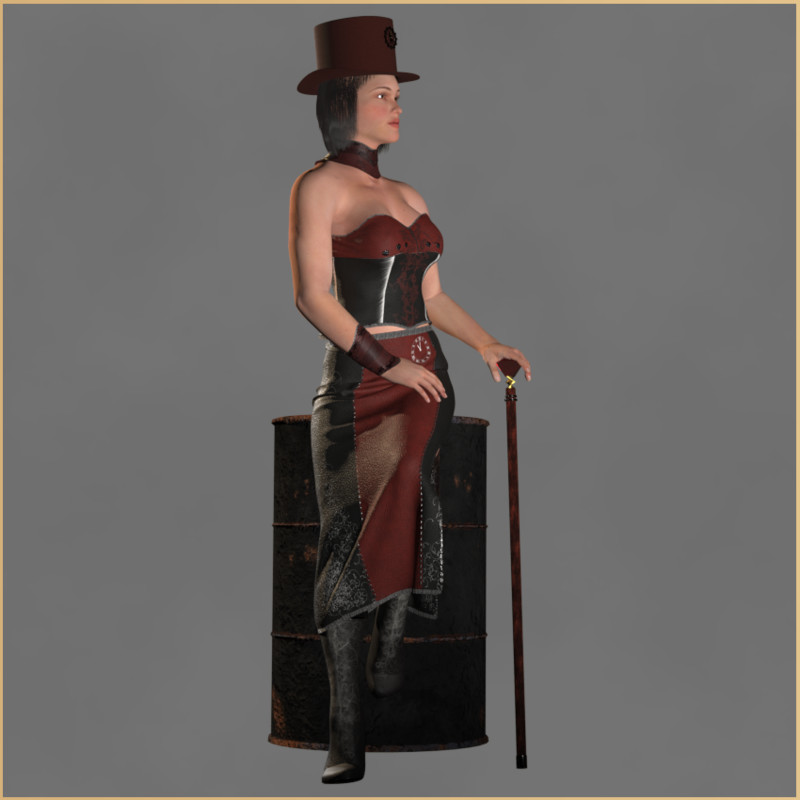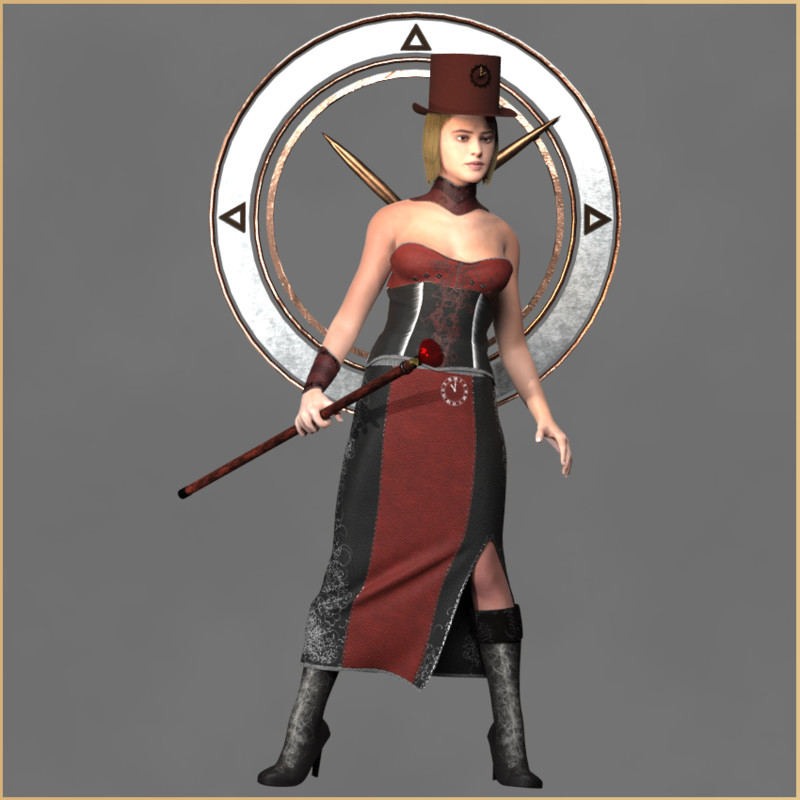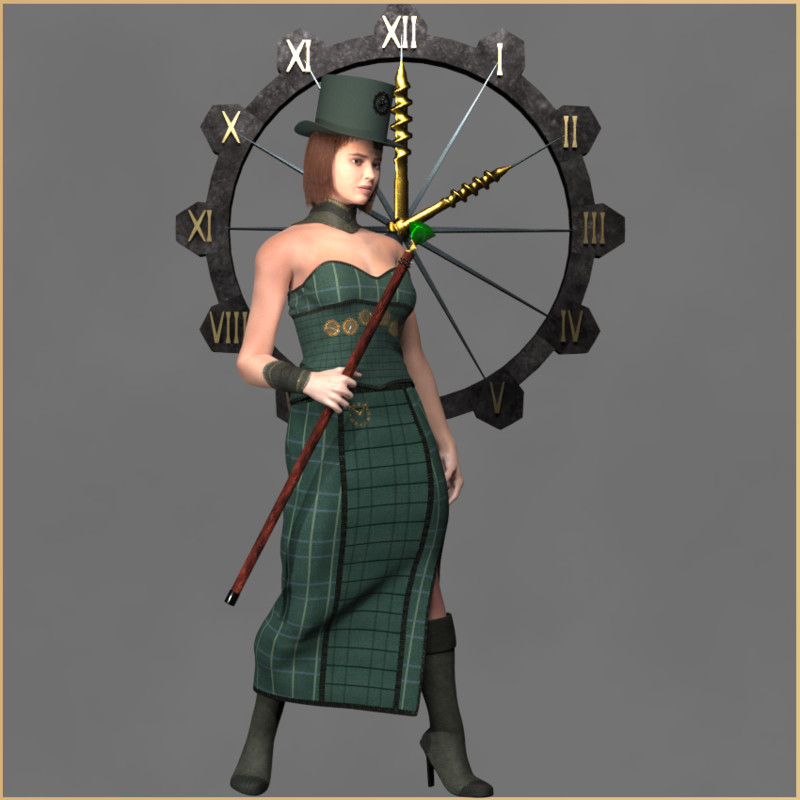I have a question: I’ve been considering the pros and cons of;
1) Setting up individual materials zones on an item and applying the various materials to each of them OR
2) Using Substance Painter’s polygon fill tool to mask off the areas and paint on them.
Choice 2 gives more flexibility to change the overall look of each material set whereas choice 1 locks you into painting on the zones as defined.
But choice 1 would make it easier for an end user to apply whatever materials they have at hand to the item, given that most people don’t have access to programs like Substance.
I can think of many pros and cons which I won’t bore you with here and in the end I conclude that choice 2 is best for my work-through, however in a conversation I was having with Miss B I’m now revaluating this and thought I’d ask for other people’s input.
With the outfit in the attached renders; the three steampunk styled materials were done in substance painter and the other three was where I set up the material zones and threw on some materials I had in my library.
And yes I know the zones I made are the same as the polygons that I picked in Substance, so they do have that similarity; however in Substance I’m not restricted to those zones.
For me choice 2 has some huge advantages, particularly when it comes to using displacement maps like I have in the collar and wristband. … well now it sounds like I’m asking people to just give me the opinion that this is the best choice (which, let’s face it, that’s obviously what I am doing) BUT I would like your feedback on what work-through you each prefer.
1) Setting up individual materials zones on an item and applying the various materials to each of them OR
2) Using Substance Painter’s polygon fill tool to mask off the areas and paint on them.
Choice 2 gives more flexibility to change the overall look of each material set whereas choice 1 locks you into painting on the zones as defined.
But choice 1 would make it easier for an end user to apply whatever materials they have at hand to the item, given that most people don’t have access to programs like Substance.
I can think of many pros and cons which I won’t bore you with here and in the end I conclude that choice 2 is best for my work-through, however in a conversation I was having with Miss B I’m now revaluating this and thought I’d ask for other people’s input.
With the outfit in the attached renders; the three steampunk styled materials were done in substance painter and the other three was where I set up the material zones and threw on some materials I had in my library.
And yes I know the zones I made are the same as the polygons that I picked in Substance, so they do have that similarity; however in Substance I’m not restricted to those zones.
For me choice 2 has some huge advantages, particularly when it comes to using displacement maps like I have in the collar and wristband. … well now it sounds like I’m asking people to just give me the opinion that this is the best choice (which, let’s face it, that’s obviously what I am doing) BUT I would like your feedback on what work-through you each prefer.

